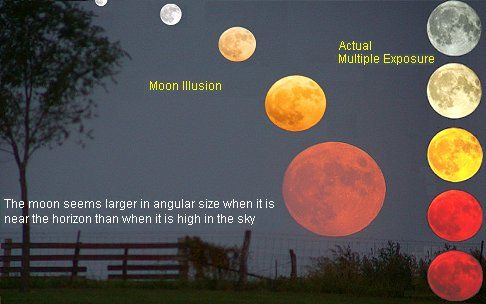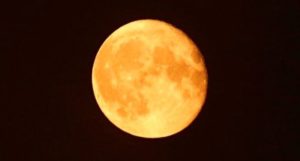Tomorrow’s full moon, also called the cold moon by Native Americans, is the only super moon of 2017. Moon rise is at 4:59 PM ET just shortly after sunset. So put on you coat, grab a camp chair, your favorite beverage, hot or cold and enjoy the view. Supermoon 2017: Biggest, Brightest Moon of …
Tag: Super Moon
Nov 13 2016
November’s Beaver Moon Is Super
Tonight’s full moon will be at its closest to the Earth since 1948, making it appear larger and brighter than usual. The moon will appear around 14 percent bigger and 30 percent brighter compared with the smallest full moons. It will be worth taking a step outside to see this super supermoon. What is a …
Sep 27 2015
The Super Blood Moon
Tonight most of North America, especially the east coast, will enjoy the site of a full lunar eclipse. The full moon of September is also the Harvest Moon, the full moon closest to the Vernal Equinox. It’s also a super moon, when the moon’s closest to the earth in its orbit, thus the moon will appear brighter and larger than usual. Because of its proximity during the eclipse, the moon will take on a reddish hue as the earth’s shadow passes across its surface. This is known as a “blood moon.” This is the fourth blood moon over the last 2 years which is called a “tetrad” in astronomical circles. The last time this occurred was in 1982 and will not happen again until 2033.
Needless to say, the event has also brought out the religious fringes, who believe the event is a signal for the end of time. However, according to NASA, there is no current threat of the earth being destroyed by a comet or asteroid for the “next several hundred years.”
For those of you who are camera buffs, Huffington Post Science has some helpful tricks for photographing tonight eclipse
Smartphones have made it easy to capture all sorts of fleeting moments — from a seal riding a whale to the pontiff gliding past in his popemobile.
But if you’re hoping to capture an Instagram-perfect shot of this weekend’s supermoon lunar eclipse, it will take a bit of preparation. After all, you’ll be shooting a darkened moon against the night sky. [..]
Keep your camera steady and your exposure long.
Whether you’re using a smartphone, a point-and-shoot or a DSLR, keeping it steady is essential. As Andreo explains, “Taking photos at night almost always drives up the exposure time, which means you need a stable tripod to mount your camera to in order to keep your pictures from turning out blurry.” If you don’t have a tripod, try resting your camera on a stool, or just try this hack that uses a piece of string.
Once your lens is steady, long exposure will help capture details of the moon’s surface despite the darkness. [..]
Get some magnification.
There are two kinds of zoom. One is desirable for this purpose, and the other is not. With a point-and-shoot camera, zoom until your lens is fully extended toward your subject. But then stop. After the lens is fully extended, your camera switches over to ‘digital zoom’ — which makes your photo look pixelated. It “just crops into your picture to make your subject take up more of the frame, but it isn’t true telephoto,” Leuchter explains. [..]
Pay attention to composition.
Unless you’re able to capture all the tiny details on the surface of the moon, you’ll need other objects in the shot to make it interesting. Snap while the moon is low on the horizon, and “try to find interesting objects to juxtapose with the full moon, like shooting through trees, or using silhouettes and other objects to show size contrast,” says Gerard. [..]
Use a self-timer
Sometimes you set up the perfect shot, but the act of actually pressing the button to snap the picture ruins it. A self-timer allows you to take a hands-off shot — you can even download an app that does it for you! Gerard explains that “using a self-timing feature helps to prevent vibrations in the camera by allowing it to settle before it takes the picture.”
Moon rise in the East at 6:36 p.m. The first shadow on the moon’s “face” will begin around 8:11 p.m. However, the total eclipse starts at 10:11 p.m. and peak at 10:47 p.m. The process then reverses itself and the moon will be back in full view after midnight.
Check your local paper for community events for watching the eclipse. If the weather is overcast in your area, you can watch it here with NASA starting at 8 PM EDT, or you can join us here at 8 PM.
Sep 08 2014
Harvest Super Moon

The full moon will rise tonight over the east coast at 6:55 PM EDT. It is the third consecutive super moon and the 5th this year.
We in astronomy used to call them perigean new moons or perigean full moons, that is, new or full moons closely coinciding with perigee – the moon’s closest point to Earth in its orbit. But, like almost everyone else, now we enjoy calling them supermoons. The name supermoon was coined by an astrologer, Richard Nolle, over 30 years ago. It was popularized and came to be the accepted term for most people only in the past few years. Are supermoons hype? In our opinion … gosh, no, just modern folklore. And they can cause real physical effects, such as larger-than-usual tides. The year 2014 has a total of five supermoons. They are the two new moons of January, and the full moons of July, August and September.
It’s also the Harvest Moon which is the full moon closest to the autumnal equinox which falls (punny) on September 22 this year.
The super Harvest Moon and Mid-Autumn Festival of September 8-9 are early in 2014, but September equinox isn’t until September 23 at 2:29 UTC. Although the equinox happens at the same moment worldwide, the clock times vary by time zone.
In the U.S. this equinox comes on September 22 at 10:29 p.m. EDT, 9:29 p.m. CDT, 8:29 p.m. MDT or 7:29 p.m. PDT.
In the Northern Hemisphere, the sun is rising later now, and nightfall comes sooner. This is our autumn equinox, when the days are getting shorter in the Northern Hemisphere. At this equinox, day and night are approximately equal in length. For us in the Northern Hemisphere, people are enjoying the cooler days of autumn even as preparations for winter are underway. South of the equator, spring begins.
Depending on where you live the Super Harvest Moon can be on either tonight, September 8 or September 9
It happens on September 9 at 1:38 Universal Time. In North America, the crest of the moon’s full phase comes on September 8, at 9:38 p.m. EDT, 8:38 p.m CDT, 7:38 p.m. MDT or 6:38 p.m. PDT.
So the night of September 8-9 has the brightest, fullest moon for the Americas. Meanwhile, for the most of Asia, the moon turns precisely full during the daylight hours on September 9. For all of us, by the night of September 9-10, the moon will be waning. In fact, September 8, 2014 is the night of the Mid-Autumn Festival in Asia, which is linked to this full moon.
For modern Pagans and Wiccans, this moon marks the start of the second harvest which culminates on the Autumnal Equinox. The third and final harvest then begins as the nights are longer than the days and we start to prepare in earnest for winter. Samhein, or Halloween, marks the final harvest celebration with bond fires, feasts and music marking the passing of another year and the beginning of winter.
Wherever you are tonight, step outside, stand barefoot on the earth, reach up to touch the moon and breath.
Aug 10 2014
Super Moon and Meteor Showers
Tonight’s Full Moon is the fourth Super Moon of the 2014 and in case you miss it, you’ll have another chance on September 9. A “super moon” occurs when the moon is new or full “at or near its closest approach to Earth in a given orbit.” Tonight’s moon is at its closest for the year, only 221,765 miles from Earth. Because of its close proximity, tides will be higher than usual, which could cause flooding in some low lying coastal areas. The National Weather Service has issues a coastal flood warning for the eastern seaboard extending from parts of New York City down to Delaware
The uniqueness of this Super Moon is that occurs in conjunction with the first night of Perseid Meteor showers:
The Perseids are a prolific meteor shower associated with the comet Swift-Tuttle. The Perseids are so-called because the point from which they appear to come, called the radiant, lies in the constellation Perseus. The name derives in part from the word Perseides, a term found in Greek mythology referring to the sons of Perseus.
The stream of debris is called the Perseid cloud and stretches along the orbit of the comet Swift-Tuttle. The cloud consists of particles ejected by the comet as it travels on its 133-year orbit. Most of the particles have been part of the cloud for around a thousand years. However, there is also a relatively young filament of dust in the stream that was pulled off the comet in 1865, which can give an early mini-peak the day before the maximum shower. [..]
The shower is visible from mid-July each year, with the peak in activity between 9 and 14 August, depending on the particular location of the stream. During the peak, the rate of meteors reaches 60 or more per hour. They can be seen all across the sky; but, because of the path of Swift-Tuttle’s orbit, Perseids are primarily visible in the northern hemisphere. As with many meteor showers, the visible rate is greatest in the pre-dawn hours, since the side of the Earth nearest to turning into the sun scoops up more meteors as the Earth moves through space. Most Perseids disappear while at heights above 80 kilometres (50 mi).
This year the showers will peak around dawn on on Monday, Tuesday and Wednesday. However, they may be hard to see because of the brightness of the super moon
Your best views are between midnight and a few hours before sunrise (around 6:30 a.m.) as Earth rotates into the stream of debris left behind by comet 109P/Swift-Tuttle. The view improves as the moon sets around 3 a.m. Wednesday morning. The moon will set about an hour later each subsequent day.
Beginning Monday, your best chances are at a more family friendly evening time from shortly after sunset (around 8:45 p.m.) through moonrise about an hour later. The moon also rises about an hour later each subsequent evening, giving more opportunity to see meteors before the nearly full moon washes out the sky. Also take a moment to look low on the southwest horizon for Saturn and just below and to the right for Mars.
May 05 2012
The Super Moon Of May
It’s time to stand still a moment, look up, and breathe. Saturday night at 11:34 PM EDT the moon will reach its perigee, its closest point to Earth in its elliptical orbit and one minute later it become full. According to NASA, 14 percent bigger and 30 percent brighter than the other full moons of 2012.
Saturday also marks the midpoint of spring in the Northern Hemisphere. The exact moment between the March equinox and the June solstice occurs at 10:11 a.m. EDT May 5.
High tide will be higher and low tide will be lower. The only worry there is if Manhattan slides away into the Atlantic but Long Island would have to go first.
But whatever you’re doing, take time to go out side, stand still a moment to look up at the night sky and breathe.


Recent Comments